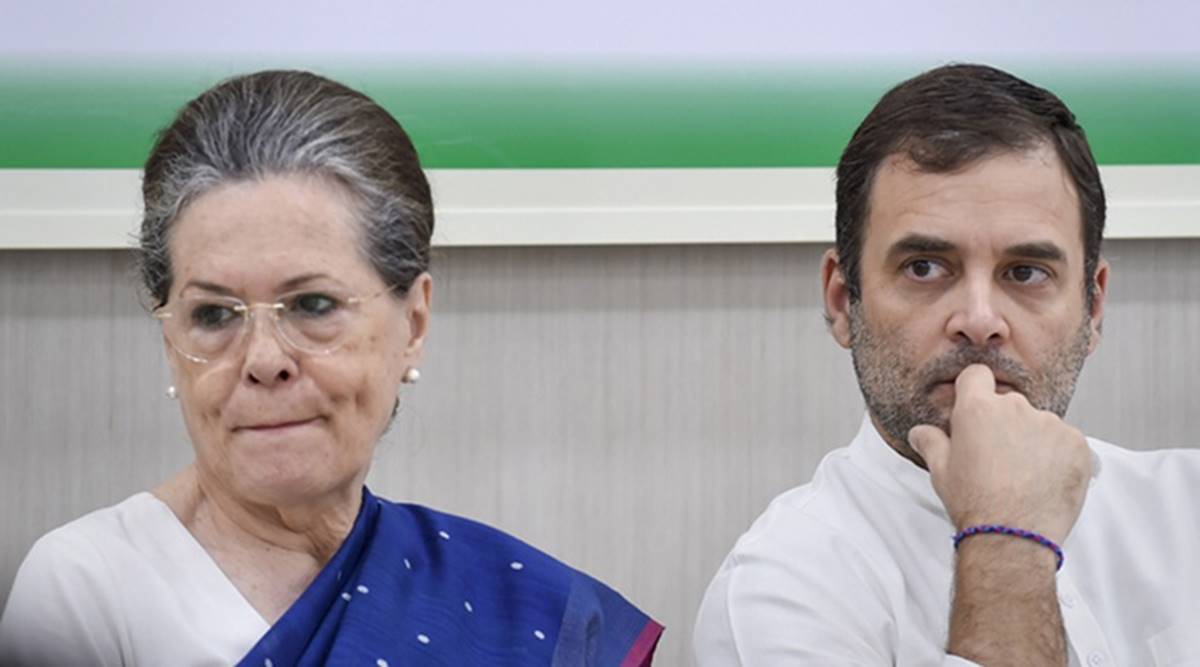 For long, family control has ceased to be a stigma in Indian politics. (PTI Photo)
For long, family control has ceased to be a stigma in Indian politics. (PTI Photo)There is a touch of irony about the demand for the democratisation of the Congress party. Every dissident group in the past had raised similar demands — dumping the High Command culture, holding elections to party posts and getting rid of the Family control. In normal situations, such golden rules should have revitalised the Grand Old Party. But we are in an extremely abnormal situation where all the cherished symbols of democracy have been overshadowed by the phenomenon of one-leader parties and charismatic strong leaders.
For long, family control has ceased to be a stigma in Indian politics. Every political party, barring the Left, is led by a family or an all-powerful supremo. The BJP was the last to fall in line. The party had a vibrant culture of internal democracy. The pre-Modi BJP held its national executive meetings every quarter where issues were loudly debated. Chintan baithaks were held to sort out bigger problems. Now no one tells us how many times the party’s executive and council met in the past six years.
Things have moved too far from the days when political parties adhered to virtues like open debates, free elections and mass agitations. The whole dictionary and grammar of political discourse have changed. Pratap Bhanu Mehta explains how in recent times Indian voters have shifted loyalty towards charismatic strong leaders (IE, August 26, ‘Simply Vishwas’). It may be a transient phenomenon. Or so let us hope. But see the anomaly. The spell cast by the supremo is such that miseries caused by wrong decisions like demonetisation and the chaotic economic governance have only strengthened the voters’ trust in the leader. The Congress has not been the only loser in this bitter war of perception. All opposition parties, including regional outfits, have been thrown by the wayside by the Modi juggernaut. Their working space is curtailed. In the process, they have also lost their traditional platforms for mobilisation like trade unions and deprived social groups. Now, the pandemic has made it worse.
In the good old days of deliberative democracy, the opposition of the day had enormous inputs to scrutinise the executive’s performance. When Atal Bihari Vajpayee was prime minister, outfits of the Sudarshan-led RSS and the NDA’s outside supporters like the TDP insisted on public debate on crucial issues. Initiatives like the Insurance Regulatory Bill had to be deferred. During the UPA days, debates with the Left allies, NAC welfarists and the core group provided enough ammunition to the Opposition to take on the government. RTI revelations, PILs under an alert judiciary, and regular input from statutory watchdog bodies like the CVC provided plenty of critical data. Credit goes to the CAG under Vinod Rai for exposing many of UPA’s mega scams. He had never agreed to retract vital information in CAG reports. Today’s opposition finds all such sources slam shut.
The most formidable roadblock for the Opposition has been the total breakdown in their communication with the public. Blocking of the counter-view is a vital component of the new information matrix. Here is a curious paradox. The Opposition is free to raise their concerns on any issue but their voice is barely heard. Dominant sections of the media customarily dumb down the counter-view or their voice is overwhelmed by official denials. They feel helpless at the smear campaign by channel warriors. The force of the official narrative is so imposing and pervasive that the opposition parties just give in. Look at the way most political parties instantly welcomed the abrogation of Article 370, which for them was an article of faith for the past seven decades.
The growing digitisation of communication with the voting public and social media war have triggered another unequal war. The ruling party with its extensive digital network had launched the Bihar election campaign over a month back. The Congress bid for a limited national digital network is hampered by an acute cash crunch. A party that once netted a bulk of the corporate kitty now survives with the meagre funds from benefactors in the Congress-ruled states. The introduction of electoral bonds has made it worse for the GOP.
It is such hazardous atmospherics that has pushed the Congress — and other opposition parties — into the present predicament. As for the Congress, it is too naive to presume that internal reforms will be an answer to its present problems. For 15 years, Congress prime ministers outside the Family ruled the country. Narasimha Rao (1991-1996) had a free hand and held the dual posts of PM and party president for five years. He never allowed outside interference. He took his own decisions on the Ayodhya kar seva, dissolved the elected CWC, appointed his men as chief ministers and PCC chiefs. On June 20, he gave on-the-spot order to Cabinet Secretary Naresh Chandra conveying India’s readiness to accept the IMF conditionalities. This was 20 hours before taking oath as PM and without consulting party colleagues. President R Venkataraman was upset over the PM-elect taking policy decisions before proving majority in Parliament.
The Congress tally of MPs dropped from 252 in May 1991 to 140 in May 1996. After the electoral rout in 1996, Rao tried to remain as party president so that he could use his position to bargain with Deve Gowda for dropping half a dozen corruption charges against him. On September 23, 1996, Sitaram Kesri replaced Rao as Congress president. But within 18 months, even Sharad Pawar joined the anti-chacha bandwagon to bring back the Dynasty to 24 Akbar Road. Pranab Mukherjee in his memoirs explains why the experiment failed.
The writer is a senior journalist